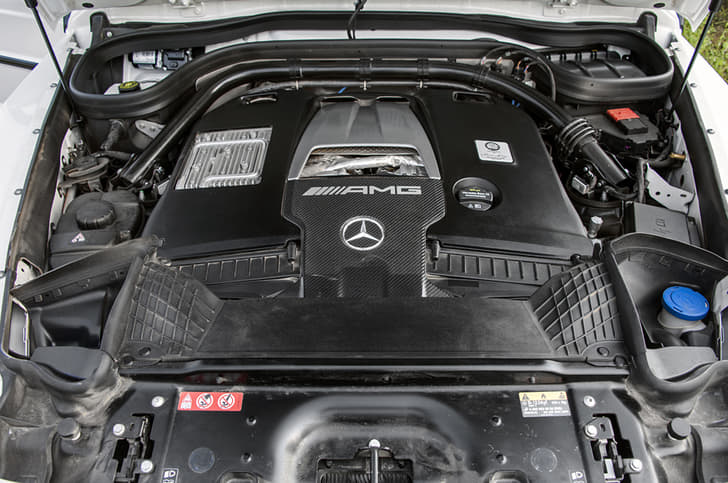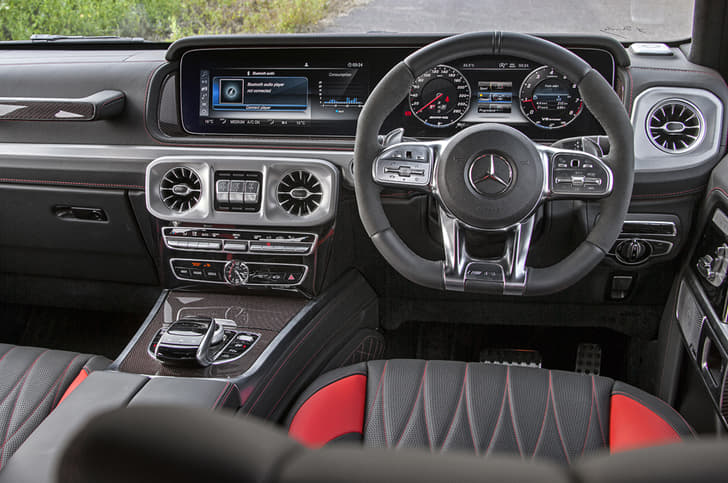Thirty years of Lexus compressed into two heady days of driving in Costa Rica. From the LS400 to the stunning LC500 coupé, I got to drive all the milestone cars that established Lexus as the most credible Japanese luxury car brand.
This wasn’t just a history lesson but more of a 30th birthday bash, which Lexus celebrated in style by bringing not just its entire current range but some its historic cars as well, to this postcard-perfect Central American country.
The icing on the birthday cake is the fabulous location, which centred around the posh Four Seasons hotel in Papagayo and the El Mangroove resort. Green, clean and completely unspoilt, this northern corner of Costa Rica has fabulous roads that gently roll over undulating terrain, with the Pacific Ocean on one side and volcanic hills on the other. And the best part is that in this lightly trafficked region, the police are rather lenient about speeding.
The cars I had my eyes on are those that bookend Lexus history – the original 1989 LS400 and the stunning LC500, the current flagship coupé. A short drive in the LS400 made me understand why this car defined the Lexus brand.
This humble luxury sedan sneaked onto the turf of a complacent Mercedes and BMW in America and disrupted the lucrative luxury car market. Germans luxury brands wowed customers with their brilliantly designed and engineered products and didn’t think customer satisfaction was a big deal. That’s the chink in the German armour the LS400 drove right through and blew wide open. Lexus showrooms with their fancy furniture and five-star hospitality set new standards for service, which won over an American audience that loves pampering.
But in its unrelenting quest to make the perfect car, backed by a high-quality ownership experience, Lexus never bothered about design and that’s apparent in the LS400’s rather unremarkable appearance. In fact, the brand was criticised over the years for the uninspiring styling of its cars and this was becoming a weakness, especially since German rivals had upped their game on the sales and service front.
Then one fine day, Toyota (and Lexus) boss, Akio Toyoda, issued a mandate to his design teams: “No more boring cars”, and the result of that edict was a styling upheaval across portfolios – something that is no more obvious than in the stunning Lexus LC500.
The first LS400 and the latest LC500 may be separated by nearly 30 years, but parked side by side, they look a millennium apart.
In your face
First launched in 2017, and mildly updated for 2019, the LC500 is the boldest and most audacious model to come from Toyota’s luxury car division, if you don’t count the one-off limited-production LFA supercar.
The LC500’s proportions are classic front-engine, rear-wheel drive and a great starting point for a car that looks jaw-droppingly stunning from every angle. The wide track, long bonnet, which houses a thunderous V8 (you also get a politically correct V6 hybrid), the massive 20-inch dual-tone alloy wheels and, of course, the hour-glass shaped ‘spindle’ grille (a Lexus trademark) make this a car that can easily swivel heads.

It’s with the detailing that Lexus designers let their hair down, and must have been a couple of sakés down too. The knife-like front and rear tail-lights look amazing and the body, replete with cuts, creases and folds, is like a work of origami.
It’s hard to fathom that the LC500, with its radical looks, comes from the same home as the LS400. Akio Toyoda wanted a change and boy did he get it!

The dashboard, too, with its swoopy design and multi-layered mix of materials that wraps itself around large 10.3-inch infotainment screen and a digital instrument binnacle, follows Toyoda’s diktat. The sense of quality the LC500 oozes is quite special. Right from the moment the flush-mounted door handles glide out to welcome you, to when you plonk yourself in the snug-fitting 10-way adjustable seat and drive off, you won’t find a sub-standard bit in the cabin. If there is a gripe it’s the over-sensitive touchpad controller, which is quite fiddly to use.

A cool touch is the pair of ‘panic’ grab handles for the easy-to-terrify front passengers to hold on to. This leads us to a key question: Is the LC500’s performance as exhilarating as its design? It depends on which engine you choose.
Jekyll and Hyde
When I say Lexus got its full range down to Costa Rica, I mean the full range, and that included LC500 with both engine options – a 5.0-litre V8 and a 3.5-litre V6 hybrid. The difference between the two engines is like night and day; the old-school, naturally aspirated V8 is a different animal altogether and that’s the variant I start out with.
Producing 477hp, it falls short of the figures of its turbocharged European rivals and the 0-100kph time of 4.4sec, though very quick, is not class-leading either. But while it lacks the sheer grunt only forced induction can offer, it makes up for it with a high-revving character forced induction cannot offer. Also, this V8 is mated to a good old 10-speed torque converter automatic gearbox.

So can this variant of the LC500 deliver some good old-fashioned fun? The only way to find out is by toggling the drive mode knob – mounted conveniently on the instrument binnacle – to Sport+.
In this mode, the engine can be wound up to the 7,300rpm limit, the engine bouncing off the limiter if you choose to operate the paddles in manual mode. All the action is beyond 4,000rpm, where the sonorous engine comes into its own and feels and sounds the best. There’s a nice throaty roar that takes on a higher pitch as the revs increase but it’s the immediate throttle response that gives you a special connected feeling. Also, the 10-speed gearbox has closely stacked ratios to make the most of the 477 horses, but it’s not particularly quick-shifting and won’t downshift easily if the engine revs are even moderately high.
If the gearbox won’t play ball, the chassis certainly will, and I was taken aback by how eager this 1,970kg sports tourer is to change direction. The steering is pretty quick with little slack around the straight-ahead position and the rear-wheel-steering system gives an added layer of agility. On the winding roads just outside El Mangroove, the LC500 felt so neutral and nicely buttoned down, with just the odd chirp from the front tyres when pushed hard, signaling the onset of understeer. The prodigious grip, superb brakes and fantastic stability made it all too easy to nudge 200kph on the many empty straight stretches of the route.
Settling into Comfort and Eco mode softens the suspension, which gives an almost-plush ride for you to chomp continents in comfort and style.
Driving the LC500h hybrid after the V8 was an anti-climax. Not because the 300hp from the 3.5-litre V6 and 180hp from the electric motor totals a lower 354hp, but because of the disconnected, uneventful way in which power is delivered via a CVT gearbox.
But it’s not just any CVT but a clever piece of engineering that combines a 4-speed auto with the CVT. The gear ratios of the auto ’box and the pre-selected ratios of the CVT add to offer the driver 10 ‘gears’ to play around with, in manual mode.
Sadly, it’s not as much fun as it’s designed to be. Okay, the rubber band effect has been largely eliminated by this sophisticated transmission but the engine revs don’t ebb and flow with your
throttle inputs, like in the V8. What you get is one linear shove accompanied by a characterless whine from the engine.
The upside is that the hybrid LC500h is very responsive off the mark, the instant torque from the electric motor pinning you into the seat, which makes you believe the claimed 0-100kph time of 4.7sec.
The good news is that Lexus is planning to launch the LC500 in India in the next 12 months. No doubt its eyeball-popping design, superb cabin and promise of a flawless ownership experience will have quite a few rich folks fork out the estimated Rs 1.5 crore.
The bad news, however, is that Lexus is thinking of offering only the hybrid LC500h and not the V8 LC500, as a show of commitment to the hybrid-tech Toyota has long championed. It’s also a statement which puts the environment first. But what about what the customer wants? Isn’t that the Toyota and Lexus way? We’ll have the V8 please!
| Technical Specifications | ||
|---|---|---|
| LC500 | LC500h | |
| Length | 4,770mm | 4,770mm |
| Width | 1,920mm | 1,920mm |
| Height | 1,345mm | 1,345mm |
| Wheelbase | 2,870mm | 2,870mm |
| Kerb Weight | 1935kg | 2020kg |
| Engine | V8, 4969cc, petrol | V6, 3456cc, petrol-electric |
| Power | 477hp at 7100rpm | 354hp at 6600rpm (Combined) |
| Torque | 540Nm at 4800rpm | 348Nm at 4900rpm |
| Gearbox | 10-speed torque converter auto | CVT |
| 0-100kph | 4.4s (claimed) | 4.7s (claimed) |
Strong and silent type
The LS400 defined the Lexus brand.

The smooth, reliable, quiet and comfortable LS400 defined what Lexus stood for and why it won so many fans in core markets like the US. This car was a game changer, and to understand why, I took a quick spin in an immaculately preserved 1990 model.
The LS400 takes you back in time. A time when there was no satnav, no Bluetooth and no touchscreens. The grand-old Lexus’ business-like interior with plush leather seats, a cassette/ CD player and an array of large chunky buttons amidst a logically and brightly lit instrument cluster epitomised luxury back then. But what took it to another level was the refinement it offered. I was struck by how whisper-quiet the LS400 is, even by today’s standards, and the soothing experience it offered on Costa Rican roads. What also stood out is how comfortable the seats are – less sculpted than what you get in today’s luxury cars and more sofa-like to lounge in, with little lateral support. That was the age when sedans didn’t have sporting pretensions. The 4.0-litre V8 developing 250hp (a modest figure by today’s standards) felt underwhelming no doubt, but its velvet-like smoothness points to the car’s sole purpose of keeping its completely relaxed and unstressed.
Click here for Lexus India models, prices, reviews, images, videos and more







































